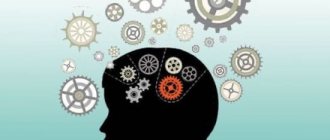Lost my fear: how damage to a part of the brain can change your life
The history of the development of medicine is full of truly exciting stories. Scientists are often helped to make discoveries by the strangest, sometimes comical, sometimes tragic incidents in the lives of ordinary people. So, in 2010, a 44-year-old American woman helped neurologists substantiate the connection between the feeling of fear and the amygdala in the brain.
Scare me if you can
Four American biologists and neurologists, Justin Feinstein and Daniel Tranel from the University of Iowa, Ralph Edols from the California Institute of Technology and Antonio Damasio from the University of Southern California, studied Urbach-Wiethe disease.
This is a very rare recessive genetic disease - less than 300 cases have been recorded since its official registration in 1929. Patients experience dermatological and neurological symptoms - hoarse voice, skin lesions, papules around the eyes, thickening of brain tissue in the middle temporal lobe.
Sometimes Urbach-Wiethe disease destroys the amygdala in the brain.
The patient’s brain had no amygdala; the disease had completely destroyed it.
In 2010, scientists managed to find a woman with this terrible disease, for which there is still no treatment. In the patient’s brain (to maintain anonymity in the study, she was designated by the initials S. M.) the amygdala was absent - the disease had completely destroyed it.
Quite soon it became clear that S.M., in addition to the main symptoms, exhibited some oddities in behavior. Namely, he does not understand at all what fear is.
Moreover, as a child, she reacted to danger like all normal people - that is, she was afraid.
For example, the patient recalled how she and her brother went for a walk in the cemetery at night, and when he suddenly jumped out at her from behind a tree, she screamed in fear.
However, when S.M. was ten years old, her brain was affected by Urbach-Wiethe disease. After a couple of years, only “black holes” remained in place of the amygdala processes. Since then, she has ceased to feel fear.
To check whether this is really so, scientists with enviable excitement began to scare the “experimental subject”.
Snakes, horror movies and a haunted house
“S.M.’s examination is truly eerie reading, as it consists mainly of descriptions of the various and increasingly intricate ways in which the scientists tried to scare her,” writes Sam, an American science writer and author of Psychology Today and The New Scientist. Kin. And it’s hard to disagree with him.
Scientists with enviable passion began to scare the “experimental subject”
A fearless patient, on her way to an exotic animal store, admitted to scientists that she hates snakes. If the biologists managed to rejoice at this faint hint of fear, it was not for long - at the sight of the hissing and squirming reptiles, S. M. became indescribably delighted and even tried to take them away from the store employees in order to hold them in her hands.
“How cool!” – she admired. Even worse, the woman was going to stroke the snakes’ tongues, which they really don’t like, and, according to the calculations of meticulous scientists, she asked to hold the largest species 15 times. As it turned out, the conditionally safe environment of the pet store had nothing to do with it - S.M.
said that she once came across a snake in the mountains and the reaction was about the same.
It was exactly the same story with spiders. The only feeling that dangerous creatures evoked in S.M. was curiosity. Moreover, the tarantula, which she was eager to hold, eventually had to be taken away from the distraught patient - the risk that the poisonous spider would bite her was too great.
“Due to the absence of the amygdala, she lost the ability to assess the dangers that threaten her, and therefore to avoid them,” the head of the scientific group, Justin Feinstein, commented on S.M.’s behavior. “It’s amazing that she’s even still alive!”
Experiments with snakes and spiders were not enough for scientists, and they took S.M. to the famous abandoned Waverly Hills Hospital in Kentucky. This place enjoys a rather dubious reputation - at the beginning of the last century there was a sanatorium for tuberculosis patients here. According to various sources, about 60,000 people died in the hospital.
After defeating the disease, a nursing home was set up here, but 25 years later, in 1988, it was also closed because the staff abused the elderly residents.
This eerie place of shadows and creaking doors attracts thrill-seekers from all over the world and was the location of ABC/Fox's Scariest Places and Syfy's paranormal reality series Ghostbusters.
And it was here that the scientists brought S.M. Moreover, they brought him on Halloween, when specially hired actors in creepy monster costumes roam around the hospital and jump out from around corners, trying to scare visitors.
As a control group, five normal women with intact amygdala were sent to Waverley Hills along with the main subject of the study. And while the control group and the scientists themselves screamed in horror, S.M.
managed to scare one of the “monsters” - she attacked him herself and poked him in the head, trying to feel his frightening mask.
The ingenuity of scientists was not exhausted there. They undertook to show their ward fragments of ten scary feature films. And although S. M. experienced a variety of emotions when viewing the films, the horror classics “The Silence of the Lambs” and “The Shining” did not frighten her at all, but rather aroused keen interest.
Current Biology, Volume 21, Issue 1, Pages 34-38
The researchers decided to rule out the possibility that their attempts to scare S.M. were simulated and not truly dangerous. They carefully studied her memories and biography.
For example, it turned out that one evening, when a woman was returning home through a dark park near the church, she was attacked by an armed man. He grabbed her, put a knife to her throat and hissed that he would now cut his victim. The attack and threats had no effect on S.M.
absolutely no impression - instead of being scared, she began to enjoy the church choir rehearsal, singing along, after which she quite calmly told the attacking man that he, of course, could do what he was going to do, but he would have to deal with angels.
The confused criminal chose not to get involved with the abnormal woman - he let S.M. go and ran away. She continued her way home at an even pace.
It's not scary to live
The result of all these tricks was an article in the journal Current Biology, published on December 16, 2010.
The Human Amygdala and Fear Induction was the first study to convincingly demonstrate that the absence of an amygdala can completely prevent a person from experiencing fear.
Of course, this is far from the only function of the amygdala, as the amygdala is also called, however, as it became clear from a study by American scientists, its role in the occurrence or absence of fear is key.
“This unique case proves that the amygdala plays a key role in the formation of fear in humans. However, the story of our ward shows that living without fear of anything is not so safe,” concluded Justin Feinstein.
“The story of our ward shows that living without fear of anything is not so safe”
However, we must give the group of scientists their due - three years after the publication of the article in Current Biology, they still managed to scare S. M. Feinstein and his colleagues forced their ward, as well as several other patients with Urbach-Wiethe disease, to inhale carbon dioxide.
The fact is that an increase in the concentration of CO₂ in the air provokes fear in people - the amygdala reacts to the increase in blood acidity and turns on “panic mode”. The researchers believed that the participants in the experiment would not react at all to CO₂, since all of them had a damaged or absent amygdala, like S.M.
However, to the surprise of scientists, all three patients with Urbach-Wiethe disease began to experience fear as soon as the “carbon dioxide inhalation” began. S.M. admitted that she felt something very similar to fear for the first time in 30 years. The scientists published the results of this study in the journal Nature Neuroscience.
They came to the conclusion that there are little-studied mechanisms of fear in the brain that are activated in response to physiological changes in the human body.
Source: https://innovationhouse.org.ua/ru/statti/strah-poterjala-kak-povrezhdenie-uchastka-mozga-mozhet-izmenit-zhizn/
Unusual phobias
Most originate from childhood, for example, excessive parental care, rough treatment by a brother or father, assault. All this creates a misconception about the opposite sex and leads to mental disorders.
However, in addition to the usual fears that are understandable to everyone, there are many fears that are obscure to humans. The reasons for these fears cannot always be identified.
What phobias do people have with unusual manifestations? Let's list some of them.
- fears of acquiring knowledge - gnosiophobia - is characteristic of residents of large cities, the reasons are unknown;
- a person suffering from dextrophobia is afraid of any objects to his right. The roots of the problem are sometimes found in dangers experienced in childhood.
- A very strange phobia - fear of buttons - kumpunophobia is rare, affecting approximately 0.001 percent of the world's population.
- Fear of clouds—nephophobia—can also manifest itself as a fear of fog.
- The fear of a period at the end of an email is punctumophobia. This group includes the fear of being misunderstood during correspondence - imojiphobia.
- The fear of a poorly taken selfie—selfiphobia—leads to hysteria.
Top 10: Diseases with unexpected benefits
I present to you a list of ten diseases that provide unexpected benefits to those who suffer from them. Long post Disease Advantage Interesting
There are now plenty of people who, contrary to common sense, deny the existence of AIDS and cancer.
True, there are no doctors among the adherents of this point of view. The opposite is also true: in the history of medicine, there have been cases when specialists did not consider an already known condition to be a disease.
As a rule, this is something with which you can live more or less tolerably, or something rare and therefore unnoticed.
Restless legs syndrome - a companion to Parkinson's disease
(OFFICIALLY RECOGNIZED AS A DISEASE: 20th century)
The symptoms of “restless legs” are as follows: at night the patient has an irresistible urge to move his legs, which itch unbearably in the area of the shins. The itching goes away when the person moves the limbs, and returns with renewed vigor if the patient lies down or is simply at rest.
Restless legs syndrome is a companion to Parkinson's disease and hardly stands out against the background of its symptoms. It is also common during pregnancy. And pregnant women, as you know, can want very strange things.
Therefore, “restless legs” did not attract the attention of doctors for a long time, although they were described back in the 17th century by the English physician Thomas Willis (Willis).
This outstanding medical figure, among other things, created opium tincture and fought a whole bunch of diseases, founded clinical neurobiology, and also discovered diabetes and described the blood vessels that feed the brain (the circle of Willis).
"Restless legs" described by diabetes discoverer
300 years after Willis, restless legs syndrome was described by the Swede Karl-Axel Ekbom. A little later, in the 1980s, Ekbom's diagnostic criteria were refined by Arthur Walters and Wayne Hening. The description of the syndrome was clarified and redone several times.
Now in the United States, according to various estimates, from 2.5 to 15% of the population suffers from “restless legs”. The severity of the disease varies widely, so there is ongoing debate about whether there should be a publicly available drug for restless legs syndrome.
The condition is treated with levodopa and other substances related to the action of the neurotransmitter dopamine. It plays a large role in the development of drug addiction and other addictions, as well as parkinsonism.
The downside is that levodopa is quickly addictive and can cause unpleasant side effects, such as baldness, insomnia, auditory hallucinations and even psychosis.
Show in full 4
[my] Educational Interesting Selection Disease From the Internet Long post
At 21 hours 4 minutes 23 seconds we have the following number of infected people in the world:
Now that we've reached a round number, let's look at the statistics again.
The ratio of mild to severe cases is still the same.
Mortality has already reached the level of minimal estimates of smallpox mortality. Of those who suffered the disease, 20% were cured in the grave.
Show in full 5
So, I am a victim of a stroke that snuck up on me on the sly... 36 years old.
Well, what I can definitely say is that there is nothing good in this.
The speech has changed, it has become less loud, and there are delays that I don’t like too much...
The right side remains foreign, the hand is not fully functional, writing is practically inaccessible to me because of... who knows why (maybe I will become left-handed?).
Football…. A week and a half ago I went to training, everything was very sad. Everything that I could do before is now inaccessible to me... I can’t even get into the gates; although they are mini-football, they are still big.
The work question remains open. Sales people, working with your face or your hands - none of this is available to me.
This is the news)
Yes, poetry stopped pouring out of me...
[my] Life Interesting Disease Genesis Text Stroke
Imagine that you are an ordinary office worker who somehow stayed up past midnight, came home, swallowed sleeping pills and the next day woke up next to the corpse of his wife! According to doctors and criminologists, this is a very real situation...
WHAT IS SOLUNATISM?
Dr Irshaad Ebrahim, Director, London Sleep Center
:
“Sleepwalking, or somnambulism, is a complex, little-studied phenomenon,” said Irshaad Ebrahim. “One of its forms, sleepwalking, occurs during non-REM sleep. At this moment, a person does not dream of anything, it is almost impossible to wake him up. The part of the brain that is responsible for self-awareness is disabled. However, he walks with his eyes open, automatically, like an animal, perceives the space around him and can perform quite complex, previously learned actions - for example, getting dressed, driving a car, preparing food.”
However, you won’t be able to send your sleepwalking wife into the kitchen to make borscht for the week. It is impossible to force sleepwalkers to do anything useful (or pleasant).
“As a rule, the behavior of patients with sleepwalking is cyclical,” the doctor added. “They get up, perform some action, return to bed and fall asleep. The next morning they don’t remember anything..."
1.
Show in full 9
Unknown artist.
State Publishing House of the People's Commissariat of Health of Belarus. 1920s.
Original spelling.
What everyone should know and do during an epidemic of cholera, dysentery, typhoid fever and other gastrointestinal diseases.
Poster USSR Vaccination Disease Interesting Propaganda Health Rules
The world's first drug for previously incurable hepatitis D, created by the Skolkovo Foundation resident biotechnology company Hepatera, received breakthrough therapy status from the US Food and Drug Administration (FDA).
Myrcludex B was created based on research by scientists from the University of Heidelberg Ruprecht-Karls-Universitt Heidelberg and is being developed as part of an international collaboration with the biotechnology company MYR Pharma, GmbH (Germany).
Myrcludex B blocks the receptor through which viral particles enter liver cells. As a result, further spread of inflammation and the development of dangerous complications are prevented.
By blocking the protein, viruses remain outside the cells, where they are destroyed by the body's immune system.
Skolkovo Medicines Medicine Development News Interesting Hepatitis Disease Similar posts are over. You may be interested in other posts by tags:
Source: https://pikabu.ru/story/top10_zabolevaniya_s_neozhidannyimi_preimushchestvami_1282156
List of major phobias
The list of phobias that a person has can be very long, but we will reduce it to the most basic phobias that are understandable to most people.
- Agoraphobia is anxiety that occurs when being in an open space.
- Aichmophobia is the fear of anything sharp - knives, forks and even pencils can cause it.
- Amaxophobia is fears caused by upcoming trips.
- A common disorder among women is androphobia - intolerance to male society.
- Anthropophobes avoid society because they are afraid of people.
- Arachnophobes are afraid of spiders, and even a painted spider causes fear.
- Autophobia is the fear of being alone.
- Aerophobia is a disorder associated with flying.
- Hepatophobia is anxiety about being touched.
- Hemophobia manifests itself in the fear of blood.
- Genophobia is the fear of starting intimate relationships.
- Gerontophobia consists of disgust towards older people.
- Gymnophobia is intolerance to nudity in oneself and others.
- Gynecophobia is the opposite of androphobia - the fear of women.
- Glossophobia is anxiety about speaking and making speeches in public.
- Claustrophobia is the fear of being in a closed space.
- Kleptophobes are constantly afraid that they will be robbed.
Lack of fear - Urbach-Wiethe disease
What does it feel like to be fearless? Do you think there are many advantages to this? You are mistaken... Fear is an instinct that allows a person to save life, and its absence is only harmful. It turns out that there is a disease that makes a person fearless in the face of any threat. How do people with Urbach-Wiethe disease live?
Fear and its meaning
Fear is one of the key ancient instincts that allows a person to avoid danger. When a threat hangs over us, a large amount of adrenaline is released into the blood, and we begin to act on the “fight or flight” principle.
The amygdala, which is a key part of the limbic system, plays a special role in the generation of fear and a number of other emotions. In patients with Urbach-Wiethe disease, destruction of the tonsils is observed, as a result of which, probably, these people cease to experience fear.
Urbach-Wiethe disease was first described in 1929 by doctors Erich Urbach and Camillo Wiethe.
However, even before them, at the beginning of the 20th century, specialists described several cases. Some time after the discovery of the disease, it was found that the pathology is hereditary.
Urbach-Wiethe disease is a recessive genetic disease that is currently very poorly understood.
The exact causes of hereditary disorders are still unclear, and it is also difficult to assess the likelihood of having a child with such a diagnosis.
Since its first mention, only about 300 cases of Urbach-Wiethe disease have been reported worldwide.
Although the disease can be found on all continents, more than 25% of cases occur in South Africa.
According to statistics, the majority of patients are of Dutch, German origin, and the Khoisan people (inhabiting the territory of South Africa) also suffer from Urbach-Wiethe disease.
Urbach-Wiethe disease
Urbach-Wiethe disease and its symptoms Since Urbach-Wiethe disease is autosomal recessive, people can be carriers of it (with a dominant and recessive gene) without any symptoms. The disease begins to manifest itself only if both genes are recessive. In this case, the patient may experience various symptoms, mainly, of course, neurological.
However, in addition to the main symptom (lack of fear), patients with Urbach-Wiethe pathology also have dermatological symptoms, such as skin lesions, scars, papules, wrinkled skin and a hoarse voice. These symptoms occur because the skin and mucous membrane are thickened.
In some cases, patients also experience thickening of the brain tissue in the middle temporal lobe, which is fraught with the development of epileptic and other neuropsychiatric disorders.
Despite the existing symptoms, in modern conditions (when human life is relatively safe), Urbach-Wiethe disease, as a rule, does not threaten the patient’s life, nor does it reduce its duration. Urbach-Wiethe disease:
History of SM
For more than 25 years, American scientists from the University of Iowa have been monitoring a mother of three children who was diagnosed with Urbach-Wiethe disease. For ethical reasons, the woman’s identity is not revealed, and in all scientific publications devoted to observations of her, she is referred to as SM.
SM lives in a very poor area and has been threatened numerous times and was even nearly killed once. However, at such moments she does not feel fear at all. She may smile if the robber seems comical to her or feel curiosity, but not fear.
Justin Feinstein, from the University of Iowa research team, says the problem appears to be that the woman's tonsils were destroyed, causing her to lose the ability to feel anxiety and fear. “This woman understands perfectly well what she needs to be afraid of, but she does not observe these prohibitions.
It’s amazing how she manages to survive and also raise three children,” the scientist notes. It is noteworthy that SM does not have any problems with memory or mental development. In general, the whole range of ordinary emotions is available to her, except for disturbing ones. Over many years of observations, no matter how hard scientists tried to scare SM, it was still in vain.
She was shown horror films, taken to fear rooms, and even given a tour of an abandoned tuberculosis sanatorium, where on the eve of one of the holidays they staged a show that was supposed to scare people. The funny thing is that the group of scientists accompanying SM was scared, and the woman simply watched the surrounding action with curiosity.
The phenomenon of Urbach-Wiethe disease in SM is also interesting because the woman is not able to identify fear in other people. That is, it is very difficult for her to understand from facial expressions and gestures that a person is experiencing anxiety.
Treatment of Urbach-Wiethe disease
There is no cure for Urbach-Wiethe disease. The absence of fear cannot yet be eliminated. At the same time, recent studies show that in such patients it is still possible to induce a feeling of fear if inhaled air with a high carbon dioxide content (about 35%) is used. Perhaps this phenomenon will lead scientists to discover other mechanisms of pathology.
Currently, treatment is limited to the dermatological symptoms of Urbach-Wiethe disease. In particular, for skin lesions, patients are prescribed dimethyl sulfoxide, heparin, D-penicillamine, as well as some drugs prescribed for psoriasis.
Some patients with Urbach-Wiethe disease experience excessive neuronal activity, which leads to seizures. In such cases, the use of anticonvulsants is appropriate.
Source: https://www.med-practic.com/rus/336/50412/%D0%9E%D1%82%D1%81%D1%83%D1%82%D1%81%D1%82%D0 %B2%D0%B8%D0%B5%20%D1%81%D1%82%D1%80%D0%B0%D1%85%D0%B0%20%E2%80%93%20%D0%B1 %D0%BE%D0%BB%D0%B5%D0%B7%D0%BD%D1%8C%20%D0%A3%D1%80%D0%B1%D0%B0%D1%85%D0%B0 -%D0%92%D0%B8%D1%82%D0%B5/article.more.html
Anxiety and neurotic disorders
Generalized anxiety disorder is accompanied by tension and a state of fear, which are the main elements of all neurotic disorders.
The feeling of anxiety in this case can be characterized as persisting for a long time, chronic. This means that its intensity changes only slightly and is rather felt as a prolonged tension (sometimes very strong), followed by strong attacks of fear.
Fear and anxiety are felt as long-term feelings of inner restlessness and agitation, manifested, for example, by difficulties in “finding one’s place” or irritability. They are accompanied by various somatic symptoms (felt in the body).
Although the causes of anxiety disorder are not entirely clear, the disorder can be treated. a very important role in the treatment of generalized anxiety disorder . It is important not to fall into the trap of the formula “I am who I am and nothing can be done”; you need to give yourself a chance and seek professional help.
No fear: Is it normal?
Fears accompany a person’s life, alternating and changing depending on age, temperament, situational moments and prevailing circumstances. It has been established that the absence of fear is possible, but it is considered as some kind of pathology.
Self-preservation instinct ↑
It is an innate form of behavior that is characteristic of every living organism, including humans. Thanks to this instinct, people are able to take action to avoid danger. The instinct of self-preservation can be realized through pain and a feeling of fear.
Despite all the negative connotations inherent in the word “fear,” there is a concept of healthy fear, which:
- does not disrupt the flow of thinking;
- acts as protection from danger;
- occurs before a real threat arises.
Experts have come to the conclusion that fear is a significant factor in evolutionary development. Thanks to this feeling, large-scale discoveries were made and new theories were mastered, attracting the hidden resources of the human body.
For some people, liberation from fears becomes the goal of life. They use a variety of knowledge and skills to become more courageous, thereby suggesting that courage is the complete absence of fear.
According to A. Reedmun, “Courage is not the absence of fear, but the knowledge that your life is something more important than fear.”
Is lack of fear a disease? ↑
The answer to this question is clear. Lack of fear is a pathology. A normally functioning living organism experiences fear. This is how the body’s defensive reaction is formed, the purpose of which is to avoid danger.
Fear mobilizes the body's strength, and its absence makes a person unviable.
Reasons for fearlessness in children ↑
Every child has certain fears. This is due to developmental characteristics at different age periods.
Fear for a child is a certain barrier that allows one to separate right and wrong, useful and dangerous actions and actions.
If there is no fear, then the development of the child’s personality is disrupted. In this case, there is no way to assess the real danger and make attempts to avoid it.
Children are susceptible to two types of fears:
- Congenital : fear of loud and sharp sounds, fear of losing support.
- Purchased . These are fears acquired as a result of life experiences and interactions in society.
A two-year-old child does not yet realize that a dog on the street can bite, and if mom leaves, she may not return. This is a sign of normal development of the child’s personality.
He has no such negative experience yet, which means he has no fear. At this age, children actively explore the world and are not afraid of new discoveries. The tasks of an adult during this period are to protect the baby and ensure his safety.
In some cases, experts say that the absence of fear is a syndrome of developing autism. The child is in his own imaginary world and is not worried about danger. Even pain is reduced or completely absent. With this disorder, decreased sensitivity of nerve endings is observed.
Growing up, such children learn to control dangerous influences and adequately evaluate them.
The book by A.I. Zakharov entitled “Day and Night Fears in Children” provides the following statistics:
- The most common fear in children of the second year of life is the fear of sharp sounds - in 52% of cases, regardless of gender.
- The second place is occupied by the fear of loneliness : boys are affected in 44%, girls in 34%.
- This is followed by fears of injections and doctors.
- In boys aged 2 years, the fear of falling asleep , because at this age they often have nightmares.
- The age from 3 to 5 years is marked by the emergence of a triad of fears: fear of loneliness, closed space and darkness . Frightening characters like Baba Yaga appear not only in dreams, but also take up residence in the daytime fantasies of impressionable children.
- The preschool period, which includes the period of 6-7 years, is associated with the fear of death . The child’s personality undergoes special changes at this time, entering a new, more mature level of morality. Girls are more susceptible to such fear, because their instinct of self-preservation is more intense.
- At the age of 7-11, fear of public opinion , fear of not being someone who is well spoken about, respected, appreciated and understood. In addition, schoolchildren at this age are afraid of natural anomalies: floods, storms and earthquakes. This is due to the magical thinking inherent in age and the tendency to believe in fate, superstition and mysterious events.
Children's fears can go away on their own, and in the case of a well-structured educational process, they practically do not leave serious consequences for the mental development of the child's personality.
If parents notice that the feeling of fear has some deviations from the norm, then contacting a specialist is necessary. A psychologist will draw up a correction program and help you cope with the problem.
Anatomical culprit ↑
In his study, D. Feinstein concluded that the tonsils of the brain function at an instinctive level. Their damage leads to the fact that a person completely loses the feeling of fear.
During the experiment, various manipulations were carried out in order to scare a woman with a rare genetic disease. Urbach-Witt disease destroyed her tonsils in her brain as a child. All attempts were unsuccessful, which allowed the scientist to confirm the hypothesis about the importance of the brain’s tonsils in the formation of feelings of fear.
A number of researchers dispute this theory, arguing that fear is formed as a complex disorder of several brain structures.
However, the idea that this feeling develops as a result of a malfunction of a local part of the brain is increasingly supported.
Fear is a special emotion. Psychological science views it in a negative aspect. But the absence of fear can be no less a threat to health and personal development. Timely identified pathology will allow you to avoid many troubles and enrich a person’s life with natural impressions.
Why is Stockholm syndrome called so?
The sympathy of hostages for their captors is generally referred to as Stockholm syndrome; why it is called this is a separate question. The person who coined this term is Nils Beyerut, a psychiatrist from Sweden. One day he found himself at the center of events in 1973, which became a new milestone in psychology and glorified the name of a previously unknown healer of mental illness.
Psychiatrist Niels Beyeruth
According to historical chronicles, a certain terrorist seized the Stockholm branch of the bank along with people. It would seem that this was a standard, albeit unpleasant, situation, but further developments showed what a strange instrument our psyche is. The criminal held three bank employees and one employee hostage, all of them were under threat of death.
The invader had only two demands - the release of his friend from prison and the transfer of a large sum of money to him with security. The police fulfilled only the first demand and both comrades ended up in a closed bank along with the hostages. There they spent five long days with their victims. It would seem that this time was enough to hate the tyrants, but instead the hostages began to feel sympathy and sympathy. And after their release, they took an active part in protecting criminals, paying for their lawyers. In addition, friendly relations were preserved and one of the former hostages continued to communicate with the criminal’s family many years later. This is how the term Stockholm syndrome appeared in psychology; the history of the name is worthy of a separate book or film adaptation.
It is worth noting that the victim-torturer attachment syndrome does not always manifest itself in this way. This is possible under certain conditions:
- Staying in each other's company for a long time;
- Humane attitude of the invader;
- Points of contact between the victim and the aggressor;
- Fear of upcoming events.
Taken together, these circumstances give rise to hostage syndrome, which serves as a survival mechanism. Sometimes victims even feel “love” for those who abuse them physically and mentally. In this case, this is no longer a normal mental reaction, but a method of psychological defense.
A physically weak woman or child cannot resist cruel treatment, but by looking for an excuse for the actions of their executioner, or by showing affection, they subconsciously want to soften it, thus easing their fate. Subservience to a stronger and more dangerous subject replaces normal affection and love. There is an emotional substitution and a forced substitution of concepts.
Symptoms of peniaphobia
Many people experience discomfort at the thought of being poor, but this is not always a phobic disorder. Most often, it is the fear of being left without money, which forces people to look for any job and do things that do not bring joy. You can get rid of fears if you find a well-paid occupation that you like or accumulate savings that you can live on for a long time in case you lose your job.
Another type of fear is thoughts of sudden impoverishment that haunt a person who has actually experienced a similar situation. This condition may be caused by post-traumatic stress disorder and may go away over time - on its own or with the help of a psychotherapist. Or PTS turns into a phobia.
Symptoms of the developed disease include both classic signs of phobia and specific changes in behavior.
Typical symptoms include the following:
- heartbeat disturbance;
- unusually heavy sweating;
- mood swings;
- panic attacks;
- depression and apathy;
- loss of willpower;
- thinking disorder;
- lack of enthusiasm;
- loss of interest in previously favorite activities.
Specific signs include:
- excessive stinginess;
- excessive spending of money;
- passion for stockpiling food, clothing, unnecessary items and other items;
- suspicious attitude towards others.
A pathological thirst to save on everything, even to the point of giving up the most necessary things, limiting oneself and loved ones in food and clothing, is common. There is a known case of the death of an elderly American woman who ate exclusively oatmeal and water and died from chronic malnutrition. After her death, it was discovered that the American woman had accumulated several million dollars in her accounts.
Conspicuous spending of money, buying unnecessary things is a way to prove to yourself and others your worth. This type of behavior is characteristic of individuals dependent on public opinion.
The “Plyushkin effect” is also not uncommon.
Many people clutter their homes with unnecessary things that might come in handy someday. Supplies consist of food, often of low quality or expired, purchased at a very low price, clothes that no one ever wears, old furniture, and household items. Patients with a particularly acute form of peniaphobia do not hesitate to collect things thrown into the trash. Suspicion is the other side of stinginess and fear. Peniaphobes are suspicious of their loved ones, believing that they want to take their property for themselves. Businessmen refuse deals, not trusting their partners, suspecting them of deception and wanting to take risks.
There are other forms of behavioral changes.
Happy Pentium Man
What prevents us from having fun today? 80 out of 100 people will say: the frantic pace of life. The regularity of two hundred years ago, when you washed once every two weeks and always slept after lunch, is a thing of the past. We have two ways - to suffer through that life or to be happy, increasing the speed and volume of RAM. Computer definition and human life are not a contradiction. There are techniques that teach you to live proactively. Diaries written out three years in advance, planning your life, no fear of action - this is happiness that is not yet available to most. When we see such people, we think: “Poor computer people!” and we don’t even suspect what a pleasure it is to live quickly.











